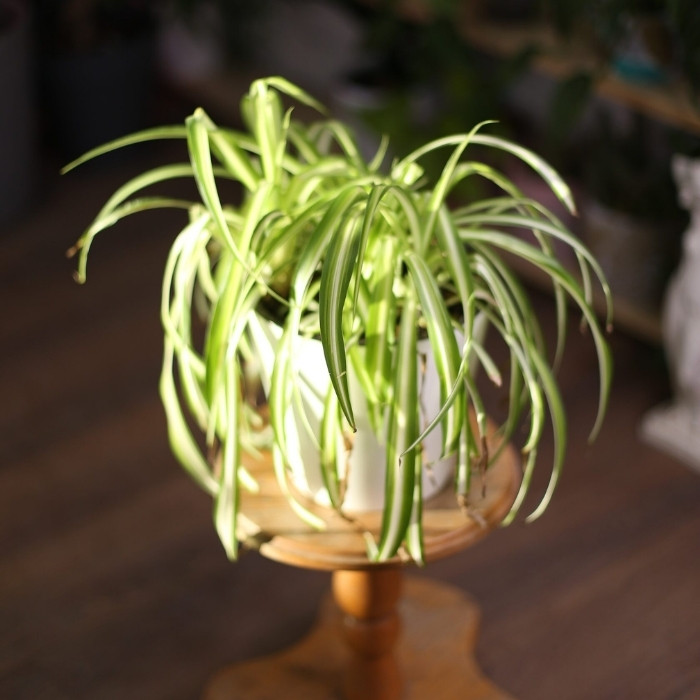Spider Plant Flowers: Everything You Need to Know
Spider plants (Chlorophytum comosum) are among the most popular houseplants, known for their arching leaves and cascading growth. While their foliage is often the star, the delicate spider plant flowers that occasionally appear are equally captivating. In this article, we will dive into every detail about spider plant flowers, from their formation to their care, propagation, and significance.
What Do Spider Plant Flowers Look Like?
Spider plant flowers are small, delicate, and star-shaped. These blossoms are typically white or pale green, with a soft fragrance that adds charm to their appearance. Flowers grow in clusters along slender stems known as stolons, which often produce baby spider plants or “spiderettes.”
Each flower has six petals that radiate symmetrically, giving them their star-like shape. While not overly showy, these blossoms can add a unique touch to your spider plant’s overall aesthetic.
When and Why Do Spider Plants Flower?
Natural Flowering Cycle
Spider plants flower when they reach maturity, usually after one to two years of growth under optimal conditions. Flowering is more likely to occur during the spring and summer months, as plants respond to increased light and warmth.
Factors That Encourage Flowering
Several factors can enhance the likelihood of spider plant flowers:
- Bright, Indirect Light: Spider plants thrive in indirect sunlight. Ensure your plant receives 6–8 hours of filtered light daily.
- Proper Watering: Consistent, moderate watering without over-saturating the soil is key.
- Nutrient-Rich Soil: Regular feeding with a balanced liquid fertilizer during the growing season supports flowering.
- Stress-Induced Flowering: Interestingly, a slight restriction in pot size can trigger blooming. Spider plants respond to mild root crowding by producing flowers and offshoots.
How to Encourage Spider Plant Flowers
If your spider plant isn’t flowering, consider the following steps:
- Adjust Light Exposure: Place your plant near a bright window, avoiding direct sunlight, which can scorch the leaves.
- Optimize Watering Practices: Water your plant when the top inch of soil feels dry. Overwatering can lead to root rot and stunt flowering.
- Provide a Balanced Fertilizer: Use a nitrogen-rich fertilizer sparingly, as too much nitrogen encourages foliage growth at the expense of blooms. Look for a fertilizer with a balanced NPK ratio like 10-10-10.
- Repot Sparingly: Repot your spider plant only when absolutely necessary. Flowering is more likely in slightly root-bound plants.
- Maintain a Stable Environment: Keep the plant in a consistent temperature range of 65–75°F (18–24°C).
Propagation Through Spider Plant Flowers
From Seeds
While less common, spider plant flowers can produce seeds if pollinated. To propagate through seeds:
- Allow the flowers to mature and develop seed pods.
- Harvest the seeds when the pods dry and crack open.
- Plant the seeds in a moist, well-draining potting mix, ensuring consistent warmth and humidity.
From Spiderettes
Spiderettes, or plantlets, are more reliable for propagation. Follow these steps:
- Identify a Mature Spiderette: Look for spiderettes with visible roots.
- Detach or Keep Attached: Either cut the spiderette from the mother plant or leave it attached while placing it in soil for rooting.
- Water and Care: Water the new plant lightly and place it in a bright, indirect light environment.
Common Problems with Spider Plant Flowers
- Lack of Blooms: If your spider plant refuses to flower, it may be due to insufficient light, over-fertilization, or inconsistent watering.
- Wilted Flowers: Poor humidity levels or dry soil can cause flowers to wilt prematurely. Mist the plant occasionally to increase humidity.
- Pest Infestations: Spider mites and aphids are common pests that attack flowers. Treat infestations with insecticidal soap or neem oil.
The Role of Spider Plant Flowers in Air Purification
Spider plants are renowned for their air-purifying abilities, as highlighted in NASA’s Clean Air Study. While the flowers themselves don’t directly contribute to this benefit, their presence signals a healthy plant capable of removing toxins like formaldehyde and carbon monoxide from indoor air.
Caring for Spider Plant Flowers After Blooming
Spider plant flowers are short-lived, typically blooming for only a few weeks. After they fade, you can choose to:
- Trim Spent Blooms: Cut off dead flowers and stems to redirect the plant’s energy toward foliage and spiderette production.
- Fertilize: Provide a balanced fertilizer to replenish nutrients.
- Monitor for New Growth: Post-blooming, spider plants often produce spiderettes, which can be propagated.
Cultural and Symbolic Significance
In various cultures, spider plants, including their flowers, symbolize health, protection, and prosperity. Their hardy nature and ability to thrive in diverse conditions make them a popular gift for new beginnings and housewarming events.
Conclusion
Spider plant flowers are a delightful addition to an already beloved houseplant. By understanding their growth cycle, creating the right environment, and addressing common issues, we can enjoy these charming blooms and propagate new plants with ease. With proper care, spider plants reward us not only with lush foliage but also with these starry blossoms that brighten any indoor space. Phyla for Flowering Plants: A Complete Guide

